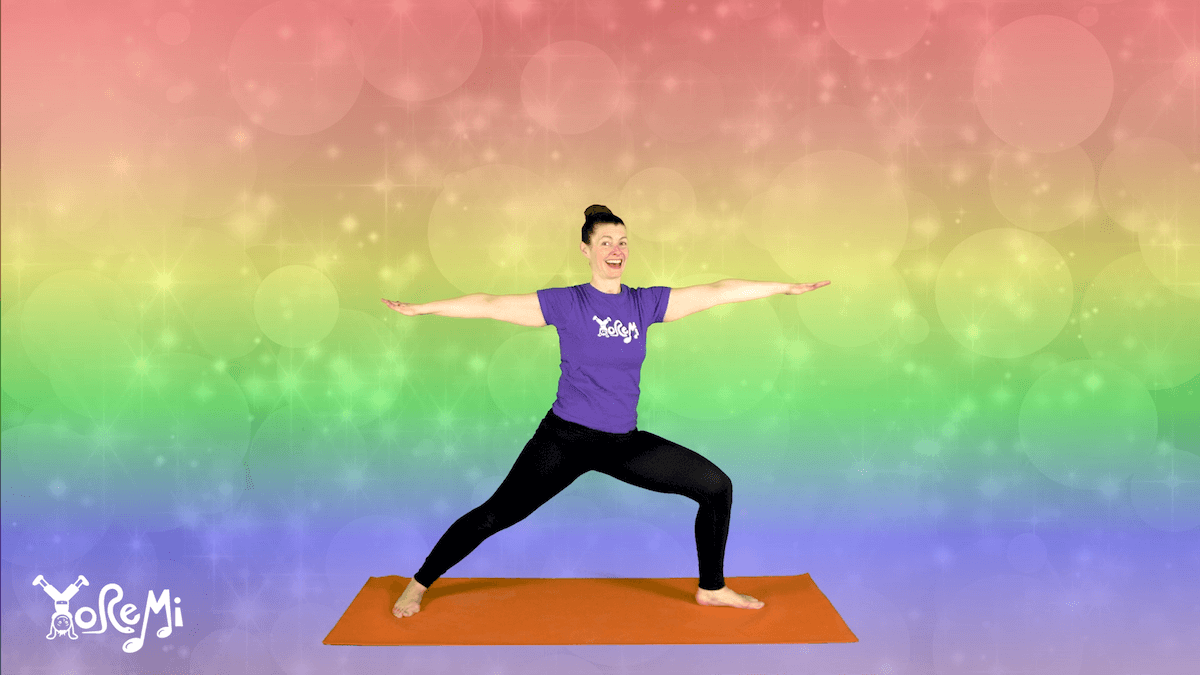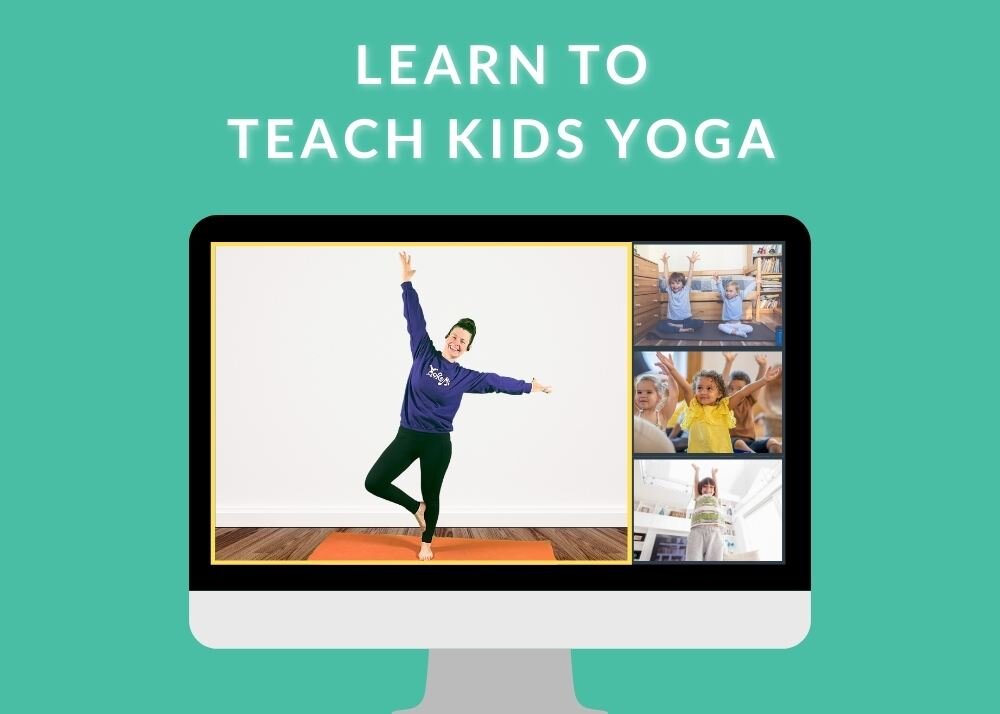Is Online Yoga Teacher Training Worth It? (Online Training vs. In-Person)
/In this time of change, we are redefining how we live, work and play. With many working from home or experiencing career changes, it is an ideal time to build new skills for the future through online training and continued education certifications.
Schools and organizations not already offering online programs have pivoted to develop accessible curriculum in all fields, including online yoga classes. Becoming certified in yoga training has not only become a priority for health and wellness professionals, but educators and caregivers as well.
But still, there’s that lingering question…is online training even worth it? Is it the same quality? Will I receive credits for my work?
In this article we’ll explore the benefits of online training, a deeper look at online yoga training vs. in-person training, and reasons why online yoga teacher training may be a viable option for you.
The Benefits of Online Yoga Training
It is completely possible to receive a high-quality yoga training online — with credits! In many ways, the new virtual space is even better than the classic model of education.
There are pros and cons of both online vs. in-person training, and ultimately it comes down to what type of learner you are and what experience you are looking for.
As we move into an uncertain future, one thing is clear - online yoga teacher training is here to stay. Here are some reasons you might want to take the leap and dive in!
1. Online Yoga Training Offers Flexible Scheduling For Busy Learners
One of the top reasons people decide not to enroll in yoga teacher training is the huge time commitment involved. While most online yoga training programs still require the same number of hours, there is a lot more flexibility in how those hours are completed.
Many yoga certifications offer a combination of synchronous and asynchronous learning which enables students to complete their training in the midst of busy work and family life.
Attending training from home also eliminates the commute which can save days of lost time over the course of an entire training. It fits into your life, rather than happening outside of it.
Schools also offer many flexible scheduling options, from intensive and immersive all-day experiences to evenings spread out across longer periods of time.
The all-day intensive is great for a freelancer or someone who has a short span of completely open time
Evenings are perfect for folks who want to complete a training around their full-time job
You can see examples of these type of training schedules in our list of flexible online yoga teacher trainings
Some trainings even allow learners to complete assignments required for certification over several months. I loved this about my recent yoga nidra facilitator training program. While I attended all of the live sessions online, it was really hard to find time to practice teaching with my two very loud children stuck at home on quarantine. The flexible due date for those assignments allowed me to relax and take my time.
2. Online Training is More Affordable than In-person Training
The affordability factor is one of the main reasons online teacher training isn’t going anywhere. Online trainings often cost less than in-person training!
The first yoga teacher training I attended cost $10,000 plus room and board for 9 weeks. Add that to the flight, car rental, books and other required materials and the financial obligation was similar to some college tuitions.
Since then, I have spent thousands of dollars on various specialty certifications, not to mention my current investment in training to become a Certified Yoga Therapist. After my yoga therapy program when online, the price reduced to over 50% less!
The training also shifted to a weekends format, which means I didn’t have to take time off work or stop teaching my Yo Re Mi classes to attend. I also didn’t need to spend money on additional childcare because I have been able to manage the training schedule with family support.
Schools save money with online training: the virtual platform eliminates several costs including space rental, insurance and faculty travel and accommodation. While shifting a program online typically increases technology expenses, most schools see significant savings which can be passed along to the students.
Online teacher training programs are also competing in an international market and competition always drives prices lower. All of these factors indicate this is a great time to receive a potentially higher-quality training at a fraction of the cost.
3. Remote Training Attracts High-Quality Faculty and Guest Experts
The flexibility of online trainings enables schools to attract high-quality faculty. Many yoga teacher trainings are facilitated by 1-2 lead teachers and a handful of assistants.
Depending on the size of the program, it’s not usually affordable to bring in multiple subject-matter experts. But now, teachers can share their specific expertise with several training programs without leaving home.
This is raising the quality level of yoga teacher trainings across the industry, and online training is making expert knowledge more accessible than ever.
4. Online Yoga Training Offers Ease and Accessibility
Attending a yoga teacher training often means lugging around a huge manual, several notebooks, and a stack of textbooks in addition to your yoga mat, props and anything else you need for training each day.
It frequently means sitting on the floor for several hours of lecture, and nursing the resulting creaky joints and aching back.
It can involve not being able to hear the speaker clearly from the back of a packed room or see the slides if you forgot your glasses.
And it means practicing yoga in a crowded environment and adjusting personal needs to the demands of the group.
While lessons in social dynamics can be useful for personal growth, they can also hinder learning. The physical requirements of traditional yoga teacher training can be challenging for the most able. For students with additional or special needs, this environment can create insurmountable obstacles.
Online virtual yoga teacher trainings increase accessibility for everyone.
Manuals, worksheets and other materials are often hosted online, in digital format. This means students can choose to interact with them in the way they learn best. Often courses include long-term or even lifetime access to these materials so everyone can go at their own pace.
From personal experience, the online yoga trainings we host provide students with comprehensive training manuals, as well as unlimited access to audio and video resources — which students can always use to refer back to.
Learning on a device allows students to adjust presentation volume, worksheet font size and other materials as needed. It also tends to make lectures more efficient as students can use chat and other technology to easily ask questions or contribute to the group discussion. Attending online school from home allows students with various needs to have the supports and accommodations they require to be successful.
5. Online Training is Good For The Earth
Some of the reasons online yoga teacher training is more affordable and accessible also make this mode of learning environmentally friendly. Hosting materials online means less paper and less waste.
Reducing travel decreases the carbon footprint tremendously. Eliminating a daily commute to and from the yoga studio cuts down on traffic congestion and greenhouse gas emissions.
If your training would typically be held at a retreat center or ashram, the eco-friendly points increase. Making meals at home rather than eating at a buffet decreases food waste and water consumption. Practicing and studying in your own space eliminates the need to daily disinfect the yoga room, mats, props and blankets.
Lastly, online learning reduces the need for schools to expand by adding more space and larger buildings. Now, organizations can reach more people across the globe while having a positive impact on our environment.
6. It is the Perfect Preparation For Teaching Online
When the yoga world went virtual, many experienced teachers found themselves floundering in an uncomfortable environment. While some tech-savvy folks easily transitioned to online teaching, several amazing teachers never made the switch and are simply waiting for a “return to normal” that may never arrive.
Yoga studios across the country have closed and it may be a while till they reopen, if ever.
Many yoga schools have made a permanent shift to online teaching.
YogaWorks, the largest yoga chain in the US with over 60 studios, closed for good, declaring bankruptcy and shifting completely online.
Attending yoga teacher training online prepares us best for this new reality.
To be successful, and an effective online teacher, yoga practitioners have to be comfortable in a virtual setting. Most trainings include several hours of peer group practice teaching, which means students have the opportunity to build these skills at the start of their teaching career.
If you want the best of both worlds, choose a training that combines online learning with in-person mentoring. That way, you can complete all the course work virtually and then get some experience teaching in person.
7. Online Training Can Help Create Deeper Connections
It may be counter-intuitive, but online trainings can actually increase both teacher-student and peer-group connection. In my first teacher training, I was one of more than 350 students. I may have talked to my lead teacher once or twice in the entire 9 weeks.
While I did make long-lasting personal connections with some of my fellow students, there were several I never even met.
Online trainings tend to be much smaller:
allows for deeper connection
provides more 1-1 support from faculty
increased individual attention
additional face-to-face time with lead teachers
can include small peer support groups and teacher-student mentoring sessions
Similar to the in-person experience, online yoga teacher trainings employ a healthy balance of independent study and group learning. The technology of the virtual space allows navigating group work with ease and much less distraction.
Try breaking 350 people into small teaching groups and then imagine the cacophony of sound those groups create in one room. As both a student and a trainer, I find the experience of virtual break-out rooms to be a huge improvement.
8. Online Yoga Training Provides Access to a Diverse Global Community
Until now, most yoga teachers would complete a training at their local studio over the course of several months. The other option was to travel to a destination for an intensive, immersive training experience. Now students can attend a training anywhere in the world, from the comfort of their own home.
Global access to these yoga trainings means the student populations are becoming more diverse. You can expect to meet folks from different places, countries, cultures and backgrounds in your online training, forming lasting relationships with people all over the world.
When we have the opportunity to see things from a wide range of perspectives, it makes us better teachers in the future. I have learned many valuable lessons from my international yoga therapy training peers and I am definitely planning future vacations to visit them!
Pro Tip: While it might be exciting to enroll in a virtual teacher training on the other side of the world, make sure you have facility with the language and understand the time zone differences. Waking up at 3am to attend your yoga program would not be ideal!
9. Don’t Worry, It’s Legit
If all the above has not yet set your mind at ease, this will probably do it. Yoga Alliance (YA) and the International Association of Yoga Therapists (IAYT) are both fully accredited distance-learning programs.
These two organizations are the main certifying bodies for yoga teachers and yoga therapists world-wide. If your yoga school is registered through YA and/or IAYT, you can rest assured that your program completion will result in the appropriate certification and credentialing.
Pro Tip: When reviewing a potential training, there may be a symbol on their website showcasing their designation badges (see the screenshot from our own online training page below). Be sure to confirm you’ll receive credits before registering for a training. Our children’s yoga teacher training, for instance, provides 30 hours of training as a Yoga Alliance Continuing Education Provider (YACEP).
That being said, not all training programs are alike. Make sure you do your due diligence, read reviews, talk to graduates and, if possible, take a few classes with some of the faculty before you enroll.
You will be investing a significant amount of money and time with this teacher so it's wise to make sure they are a good fit.
As you weigh the many different training options out there, take all the time you need to understand the requirements of the program so you can set yourself up for success. Ultimately the more prepared you are before you enter your online yoga teacher training, the better your experience will be.
Save this article for later and don’t forget to download the Yo Re Mi app for ad-free kids musical yoga and mindfulness videos.

























